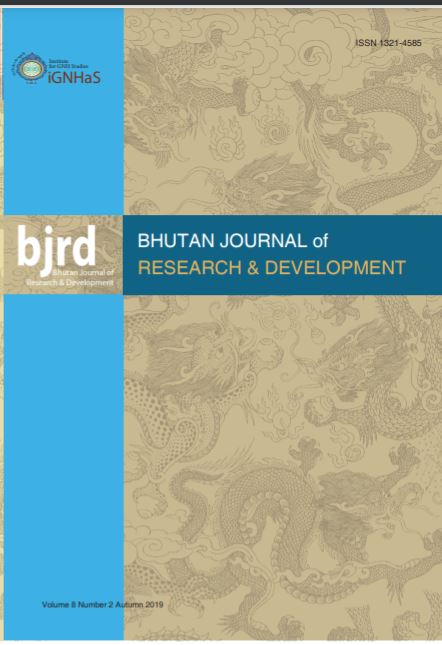Comparative Analysis of Water Discharge Measurement Methods and Seasonal Trend Analysis of Taebayrongchu Sub-watershed, Punakha
Keywords:
current meter, discharge measurement, float area method, integrated float analysis system, lean flowAbstract
Stream discharge can be measured using several methods and are influenced by the natural flowing characteristics of the stream. The study analysed the comparative measurement of stream flow using float area method and cup-type current meter with baseline data of propeller-type current meter. It also determined seasonal flow and lean flow trend analysis of stream in Taebayrongchu sub-watershed. The percentage difference and matrix technique were used for comparison of the discharge. The discharge data using cup-type current meter, propeller-type current meter and float area method were 0.912m3/s, 0.876m3/s and 1.654m3/s respectively. The percentage difference between propeller-type and cup-type current was 0.036. The cup-type current meter was used for lean flow measurement and Integrated Flood Analysis System (IFAS) modeling to determine the peak flow measurement. The Nash coefficient for the modeling was 0.598. The highest discharge in the stream was in the month of July (13.663m3/s) and lowest in the month of February (0.876m3/s). The trend analysis of lean flow showed decrease in the amount of water in the stream from the year 1998 to 2018. There was a variation in water discharge measurement in different months of the year. The IFAS modeling is less applicable for small streams.Downloads
Published
How to Cite
Issue
Section
License
All articles published in BJRD are registered under Creative Commons Attribution 4.0 International License unless otherwise mentioned. BJRD allows unrestricted use of articles in any medium, reproduction and distribution by providing adequate credit to the authors and the source of publication.



